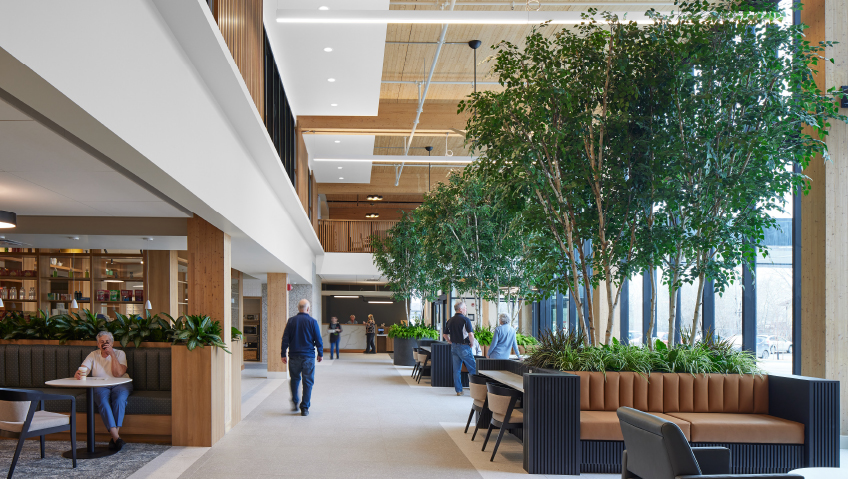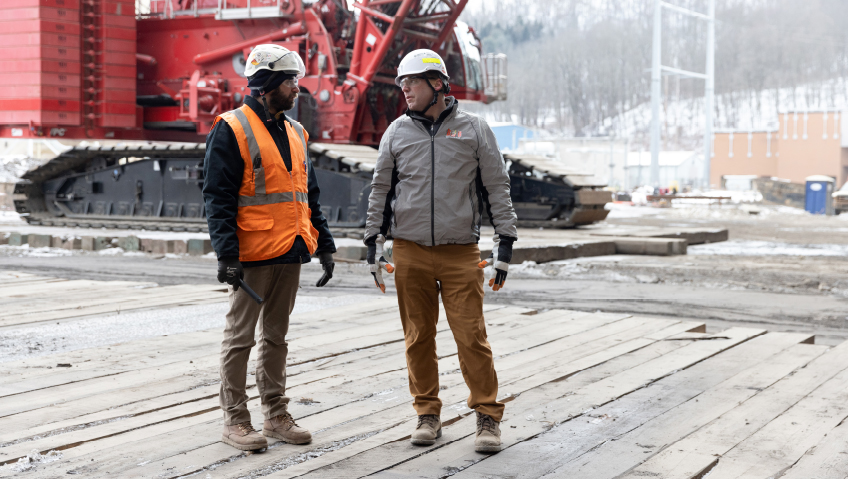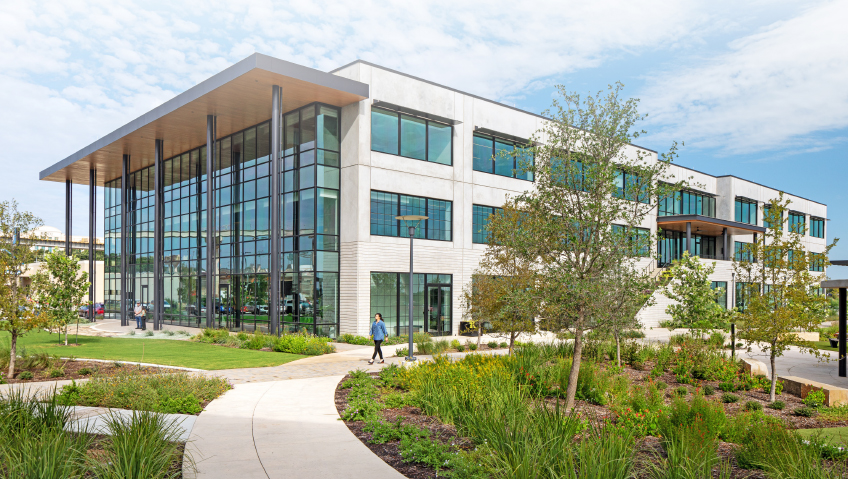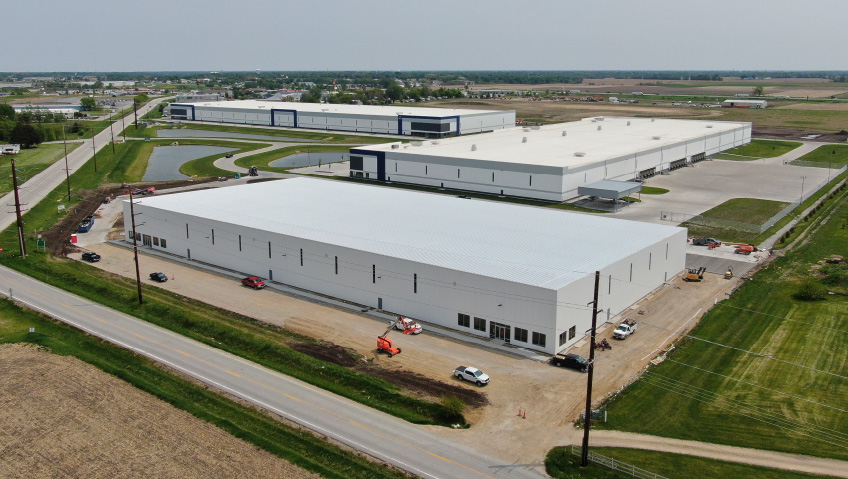Consistency, continuity, and quality have been central to the success of MMP Architects Inc., based in Winnipeg, Manitoba and founded nearly a century ago. In addition to its impressive heritage and sharp design skills, the company has a technology-savvy attitude, low staff turnover, and a customer-friendly ethos.
“Some of the canonical buildings in Winnipeg, in terms of civic buildings, were done with MMP and architectural partners,” notes Russell Krepart, Partner and Director of Design.
MMP’s design work extends to interiors as well as exteriors. The company is currently focused on the health care and multi-residential sectors—including apartments and condominiums—and wants to expand its presence in the education and Indigenous building markets. The majority of the firm’s projects are based in Manitoba, with the occasional work elsewhere in Canada.
If there is one driving reason behind the company’s enduring success, besides the notable design skills of its architects, it lies in its customer-first approach. “We deeply respect our clients and take them very seriously,” says Dustin Sharrow, Partner and Architect.
“One of our strengths is having close relationships with clients. From the very onset, we make sure we understand the client’s mission, vision, and values for the project. Then we align consulting teams to suit that type of client. From the very, very beginning, we like to involve the entire inter-disciplinary team together with the client,” Krepart agrees.
Establishing design parameters with contractors is “also key from the onset,” adds Aleksandra Chomik, Partner and Architect. Laying such groundwork “helps with our process,” and allows the company “to narrow down and focus on the details rather than going off in multiple directions.” Once MMP takes on an assignment, the company brings in trusted outside engineers to offer input, a collaborative approach that makes it easier to synchronize architectural vision with engineering realities.
MMP has a number of noteworthy projects on the go at present, including a new headquarters in Winnipeg for Payworks. With a Canada-wide reach, Payworks offers payroll, human resources, and employment management services. The total budget for the project stands at around $50 million. It is a “prominent new build site that we’re about halfway through construction right now. We’ll be finishing up next summer,” says Sharrow.
In the health care realm, the team recently completed construction documents for Lakeshore General Hospital in Ashern, Manitoba. This project focuses on an addition to the hospital’s in-patient facilities and a renovation of the emergency room. In a similar vein, the company performed work for Bergen Gardens, an assisted living facility in Winnipeg that specializes in senior care and memory services for patients with dementia.
MMP also maintains “a lot of longstanding relationships with First Nations communities,” Chomik affirms. One of these relationships is with the Opaskwayak Cree Nation (OCN), a First Nations band located near The Pas, Manitoba. MMP is working on a series of projects for OCN, including a wellness centre and the expansion of a high school and primary school. The latter assignments fit nicely with the company’s goal of increasing its education-related portfolio.
“We have a lot of university work. A lot of it is renovations, but we do have two standalone research facilities in drawings right now for the University of Manitoba,” Krepart shares.
“We have a presence in higher education—universities and colleges. We would like to get into more of the elementary schools, public schools, high schools,” Chomik adds. Civic infrastructure, including community centres and theatres, is another sector in which the company is looking to grow.
Regardless of the sector served, its recent work shares certain common factors. “Our projects are getting larger and more complicated. I think everybody here at MMP likes that challenge,” says Krepart.
Other recent challenges, however, have proven more headache-inducing. “The whole world’s been hit by supply chain and cost uncertainty,” Sharrow notes, “so every project is a challenge in terms of budget.”
Some clients are dealing with supply delays and mounting costs by “ordering expensive equipment before construction starts. It’s risky but it’s a risk our clients are more willing to take because they don’t want to be delayed at the end of the project, waiting for a mechanical rooftop piece for six months.”
Supply chain chaos has also impacted clients who want to revive projects they put on hold during the COVID pandemic. Thanks to supply shortages and inflation, the existing budget for these projects often falls short, a painful fact that the team has to explain to customers.
Given that the firm was founded in 1936 during the Great Depression, it is safe to say MMP is well equipped to sail through any current economic headwinds. Established by Herbert Moody and Robert Moore, the company was originally called Moody Moore & Partners. Among other Winnipeg landmarks, the firm designed a building for Holt Renfrew & Company Limited in 1944 as well as the Imperial Oil Company office block built in 1948.
The company provided designs for countless hospitals, schools, and other structures during its early decades. Sometimes, the company took on projects outside of its hometown, including an assignment at the famous Queen Victoria Hospital in East Grinstead, England. It worked on this historic medical facility (which provided reconstructive surgery for disfigured Allied soldiers) during the Second World War. In the late 1940s, MMP provided designs for the Hudson’s Bay Company office and warehouse in Montreal, Quebec.
Over the years, the company has seen its share of change, with expansions, acquisitions, new staff, and a merger in 1969. In 2020, Chomik, Krepart, and Sharrow became partners at MMP, and the trio is determined to chart a brave course for the future while respecting the company’s heritage.
Certainly, MMP’s longevity has been a selling point for landing new work, and [art of the company’s legacy is in the landmark projects it has been a part of. “We can say, ‘Here are the successful results,’ says Krepart. “I think there’s something nice about having that legacy behind us. We can basically bear witness to the things we have done in the past.”
The company employs a team of 25 people, a figure that has remained consistent for almost a decade. There is little turnover in staff, which enhances the company’s work, say the principals. As evidence, Sharrow points to MMP’s quality assurance/quality control department, which is headed by a technologist and an interior designer with decades of combined experience. The pair’s extensive company knowledge ensures that quality control is managed in an efficient, effective manner.
“Any project of any significance has to go through this process. It’s set up and scheduled at the very beginning,” he says. “We have our own internal standards for [architectural] drawings and whatnot that we’ve developed over the last few years.”
“Everybody in the office understands the expectations of our drawings,” Krepart agrees.
The company has a culture built on trust, in which employees are encouraged to ask questions and develop ideas. Teamwork within the office is encouraged, and MMP strives to maintain a healthy work/life balance, offering annual retreats and other social activities.
While the staff is cohesive, this firm is far from stuck in its ways. The company is a believer in the power of technology and is an avid user of Autodesk Revit BIM software and Enscape 3D architectural rendering software. The team also makes use of virtual reality technology; but, as Sharrow explains, these solutions are simply a means to an end. “We’re amenable to technology but it has to make sense for what we’re trying to achieve. We’re not trying to chase software; we’re using software as a tool,” he explains.
Moving forward, MMP wants to enhance its already impressive design services while, at the same time, remaining true to its nearly century-long legacy. “We’re not quick movers… In terms of our legacy, there’s an expectation that our clients and peers have of us,” says Krepart. “We are a legacy firm but we can’t continue to be a legacy firm unless we’re planning for the future.”
To this end, the three principals are keenly aware of the importance of arranging a proper succession plan to make sure MMP continues to flourish long after its centenary.
“Ultimately, we’re going to be stepping away [and the company] will go to somebody else. The legacy is not the critical part on the client side but, internally, it really is. We don’t want to change things overnight or flip tables upside down. We want to maintain the quality we have and build on that,” states Sharrow.






